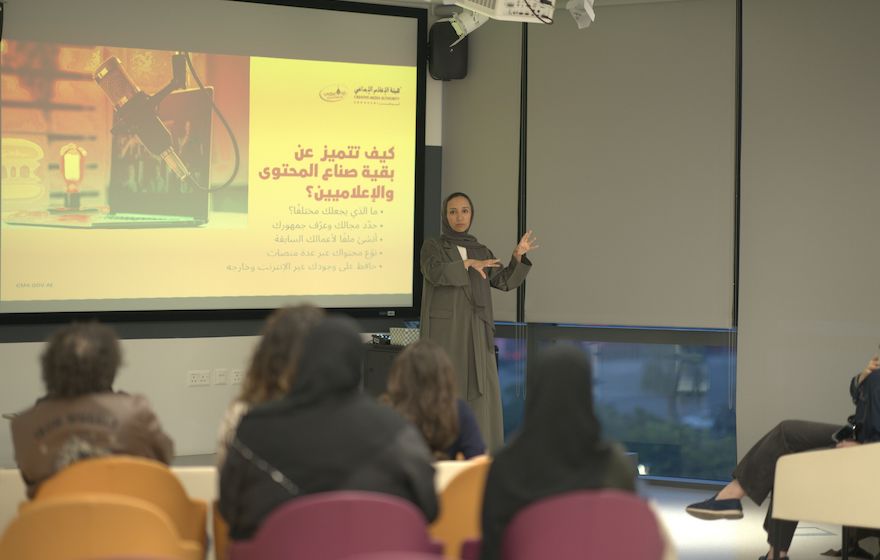indaHash co-founder Barbara Soltysinska and Future Tech managing director Boye Balogun on why influencer tech is the future of marketing
indaHash is an international platform that automates content marketing campaigns with digital influencers on Instagram, Facebook and Snapchat. Since its launch in early 2016, it has executed more than 600 campaigns in 30+ countries for brands such as Coca-Cola, McDonald’s, P&G and L’Oréal.
In the MENA region, indaHash has partnered with Future Tech Media for its launch. We caught up with the two companies to discuss the current state of influencer marketing and understand their vision for the Middle East.
Barbara, you come from a PR and social media background. What was the idea behind indaHash?
Soltysinska: The success of my previous company, LifeTube, hinged on YouTube artists creating amazing branded content for brands. When we looked at how to scale the business, we felt that automation was an interesting route, but not one that was possible with YouTube.
At the same time, platforms such as Facebook, Instagram and Snapchat were providing an interesting, marketer-friendly solution. At that time, deals on YouTube were only available for the biggest and most recognizable stars. We knew that harnessing the creativity of multiple smaller influencers at scale, via an automated platform, would be something brands and agencies would immediately see value in.
So how is indaHash different from traditional influencer marketing?
Soltysinska: For brands, we provide an automated solution for original content creations. This allows them to benefit from the enhanced engagement levels that come with influencers. For influencers of all sizes, it offers the possibility of working with the brands they love and monetizing their social following.
Balogun: There is simply no other automated influencer tech platform in the market.
Why did you choose Dubai for your fourth office, following Warsaw, London and Germany?
Soltysinska: According to The New Yorker, the Middle East is the fastest-growing new market for ‘influencer’ strategy and execution. Abu Dhabi and Dubai are seeing a formalization of influencer outreach as a business tool, cementing the need for transparency, measurement and success rates across the region. As well as a business need, on the influencer side, I see real aesthetic quality, which in turn creates great consumer engagement and makes the MENA region a natural home for influencer-generated content solutions.
Balogun: Not only is the UAE a marketing hub for the Middle East, it is also a perfect launch city for Africa, where we also operate.
Given the rapid acceleration of influencer marketing in this region, against a more stringent business and marketing background in 2017, this is a perfectly timed launch for our partnership with indaHash to bring automation and measurement to influencer marketing in the MENA region.
It is also refreshing to see the emphasis businesses are putting on launching in Dubai before other Western – arguably more developed – markets.
What trends are you both seeing globally in the influencer marketing space, which seems to be getting quite saturated?
Soltysinska: We tend to spend more and more time watching and following other people than we do media or brands. This is why the so-called power users and digital influencers are taking over the role of traditional media – they have become publishers: human, interactive and extremely engaging. They are both creative content creators and content distributors.
This is why influencer marketing is widely acknowledged to be the fastest-growing marketing segment, growing 90 times globally since 2013. Its success is due to the rapid adoption of ad-blocking by consumers and the evidence of ‘banner-blindness’ to traditional display advertising. This consumer disaffection with traditional marketing, coupled with a desire for more authentic experiences and messaging, means digital influencers are increasingly being called on to help bridge the trust gap between brands and their customers.
We have also seen a huge growth in the power of video in brand campaigns and will shortly be launching our own video seeding project. Our initial pilots saw branded video distributed by influencers massively outperforming even brands’ own channels.
Balogun: There are multiple trends driving the influencer market overall, but particularly a requirement for a more measurable and accountable approach, while protecting creative output.
The rise in ad-blocking is pushing brands to go way beyond the banner, [while there is] a greater need for proving ROI, as marketing budgets move from traditional digital media to influencer and content marketing. Finally, advertisers are looking for scalable solutions, which is driving an increase in marketing and influencer technology spend.
What about trends in the MENA region?
Balogun: Quite similar to global trends, UAE-based research from BPG Cohn & Wolf states that as many as 71 percent of consumers would be interested in buying from a brand if it is endorsed by an influencer. Beauty bloggers appear to be particularly popular, with 63 percent of consumers’ purchase decisions being influenced by them. However, this is just the tip of the iceberg, as we are seeing an explosion in supply of quality influencers across categories and a demand for them by advertisers. I like to think indaHash is bringing a sort of democracy and a needed balance to the influencer marketing space.






